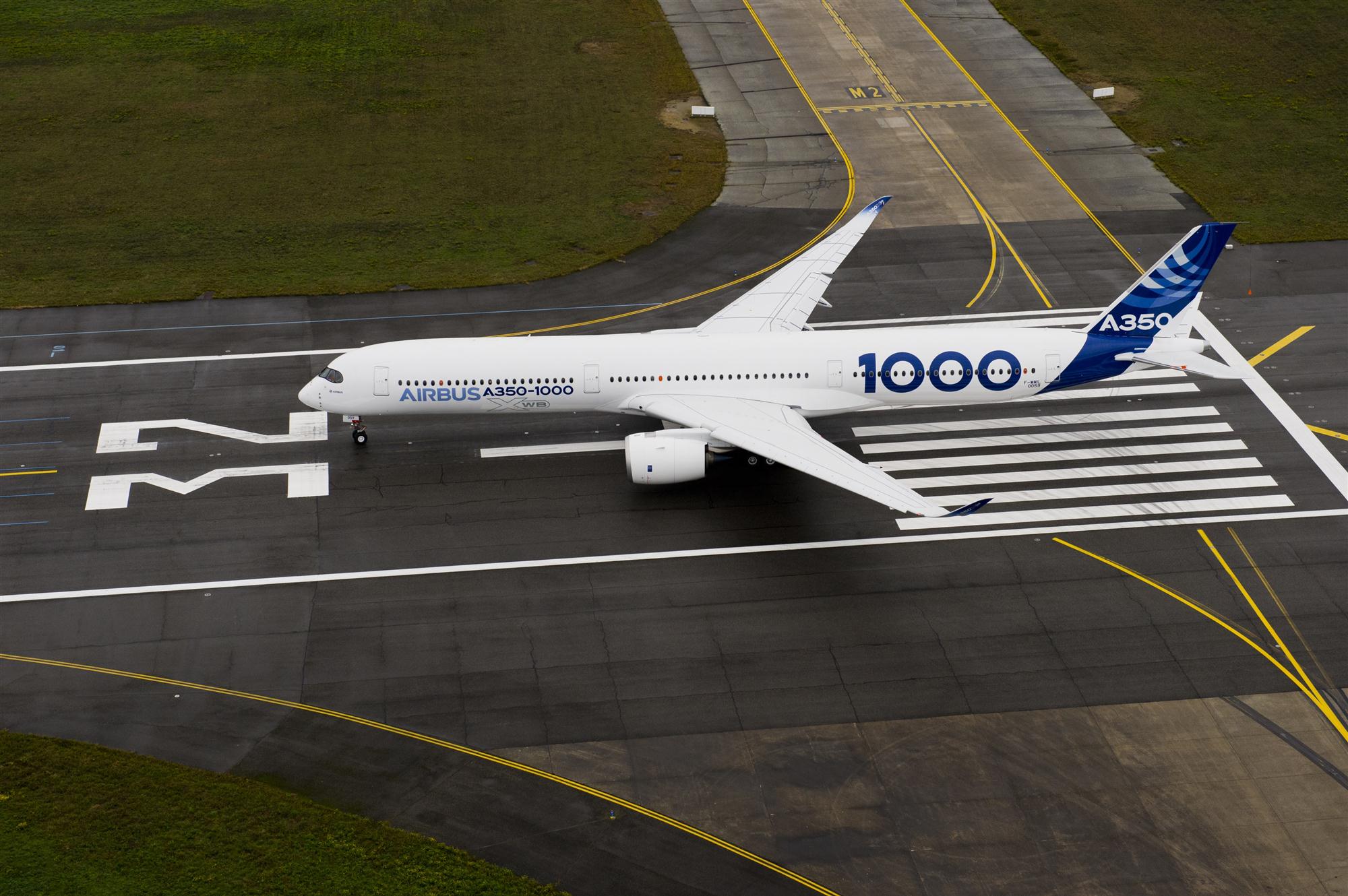The runway is clear for a freighter version of the Airbus A350, according to the European plane manufacturer’s road map, but it is likely to move first on the conversion programme for its A321 type.
With the start of test flights for the A350-1000 at the end of November, Airbus is in a position to develop an all-cargo version of the A350. The manufacturer has stated that it would be ready to move on this once all the passenger variants of the A350 are in an advanced stage of development. With the smaller A350-900 version already in service and the first -1000 due for delivery in the latter half of this year, Airbus should be ready to give the green light for the A350 freighter.
According to earlier communication from Airbus, this will be based on the A350-900 version and will offer payload and volume capabilities similar to the MD-11, which can carry 90 tons of cargo.
One airline that has signalled interest in an A350 freighter is Cathay Pacific, which already has 10 A350s in passenger service and 38 more on order for delivery. According to Mark Sutch, general manager of cargo marketing and sales, the passenger aircraft has shown good cargo capabilities, as had been anticipated.
The A350-1000, which will be 8 metres longer than the -900, will have 14 pallet positions in its bellyhold.

One possible distraction for Airbus could be the development of an even larger A350, dubbed the A350-2000, to go head to head with the proposed 777-10X that Boeing is contemplating. The A350-1000 is pitted against the 777-300ER.
Oliver von Tronchin, head of freighter marketing at Airbus, said that the decision on a freighter variant of the A350 is still in the air, pending the evaluation of data from the A350-1000 flights.
At this point an A350 freighter – like an all-cargo version of the A380 – is a concept, he said. “We need demand to launch this, and the segment needs to be large enough,” he added.
Demand for 777 freighters has been relatively robust, but Boeing has struggled with the larger 747-8. During the development stage of the A380, Airbus had garnered orders for all-cargo versions of the behemoth from FedEx, UPS and Emirates, but the two integrators cancelled their orders and Emirates converted its agreement to take on more passenger planes.
Von Tronchin is more sanguine on the narrowbody sector, which is forecast to see the fastest growth in freighter demand, with e-commerce a particularly potent factor.
“E-commerce is one of the strongest growth drivers,” he commented, adding that this dynamic has benefited the express carriers. Going forward, Airbus sees significantly higher growth in the express segment than in general cargo, citing 55% growth in express traffic over the past eight years, while international general freight went up just 8%.
Von Tronchin is particularly bullish on the A321, which will have 14 maindeck positions in freighter configuration, taking 27 tonnes with a range of 1,900 nautical miles. Unlike Boeing’s 737-800 and 757-200 freighter platforms, the aircraft will also be able to take containers in the belly, he said, although Boeing has argued that those are not standard container sizes.
The smaller A320 freighter will have 11 maindeck positions, capable of carrying 21 tonnes over 2,100 nautical miles.
Last spring PacAvi, one of the conversion specialists that have A320 series in their portfolio, announced its first orders for both types. Brazilian charter operator Colt Aviation ordered two A321 freighters with an option for one more, and Norway’s Airline Management signed up for six A320Fs. Airbus management expects the first delivery of an A321 in 2018.
The A321 conversion will be the first out of the starting blocks, von Tronchin reckons. “At some point we will do the A320, but for now people look for volume, which will favour the 321,” he said.
The A321 has been described as a competitor to the 737-800 as well as the larger 757, but von Tronchin - like some other industry executives - sees it more in line with the 757 than the smaller 737.
Either way, the explosive growth of e-commerce suggests strong demand in this freighter segment, regardless of the growth in bellyhold capacity on regional routes. The case for a widebody production freighter is harder to make.
By Ian Putzger
Air Freight Correspondent | Toronto